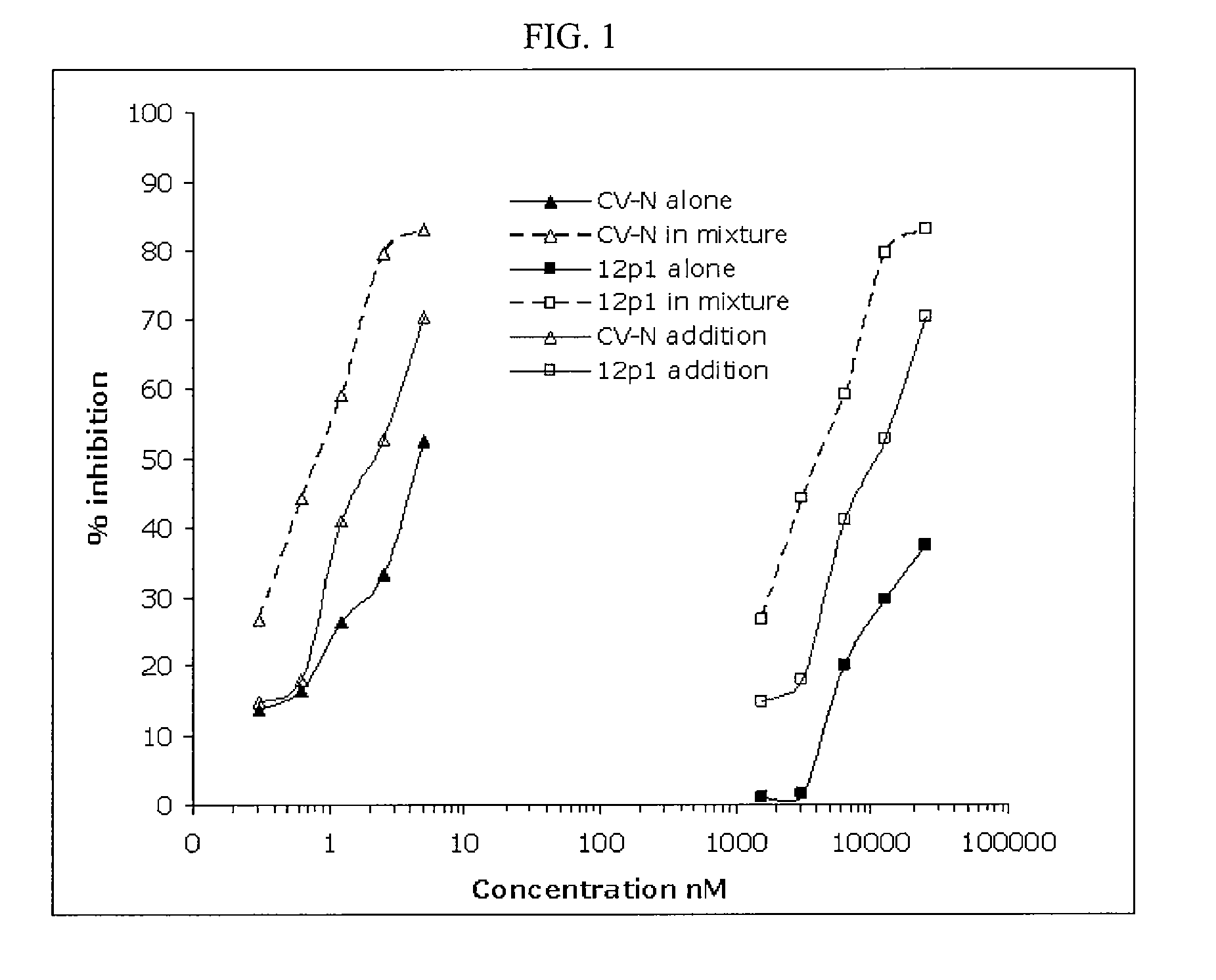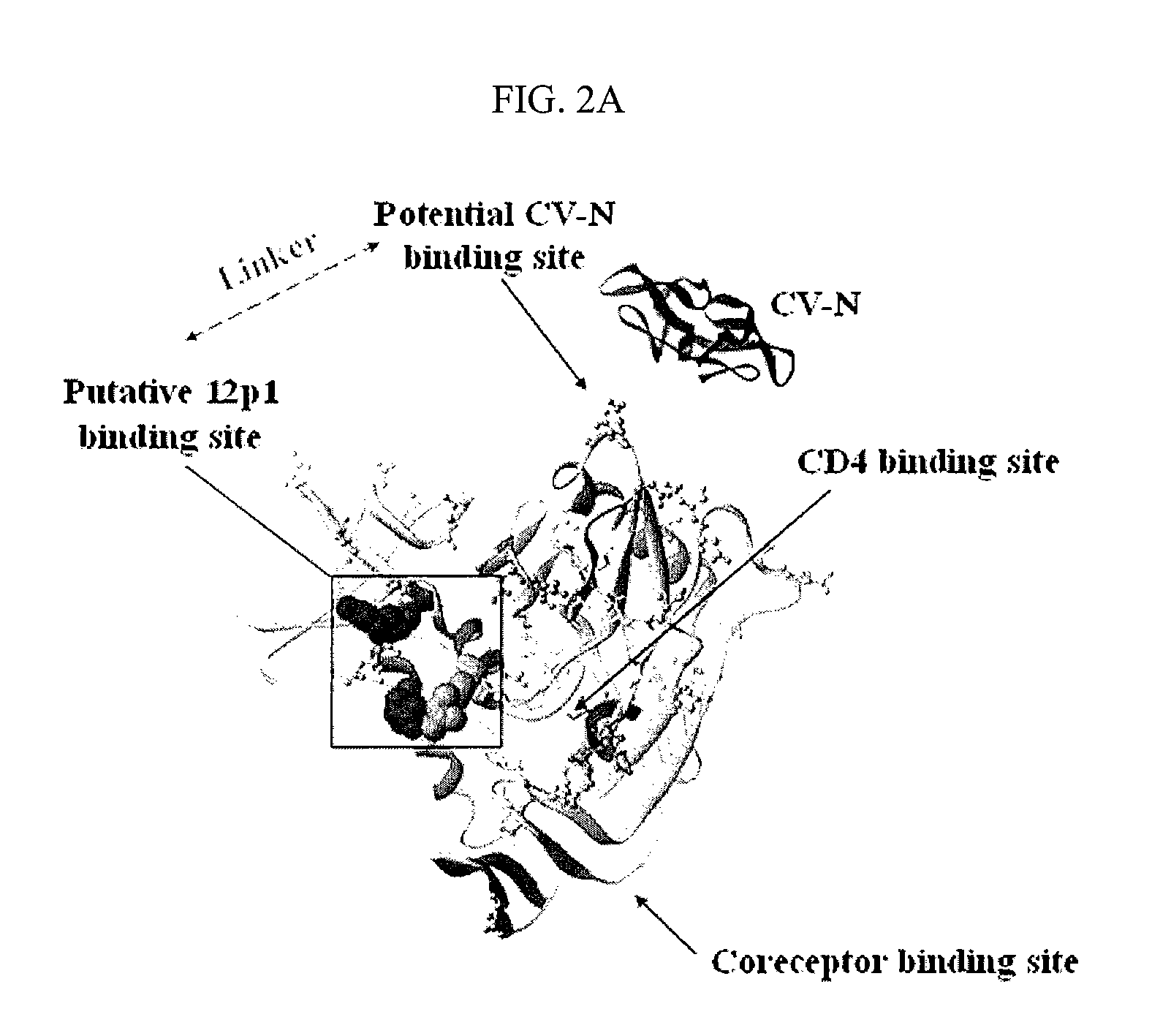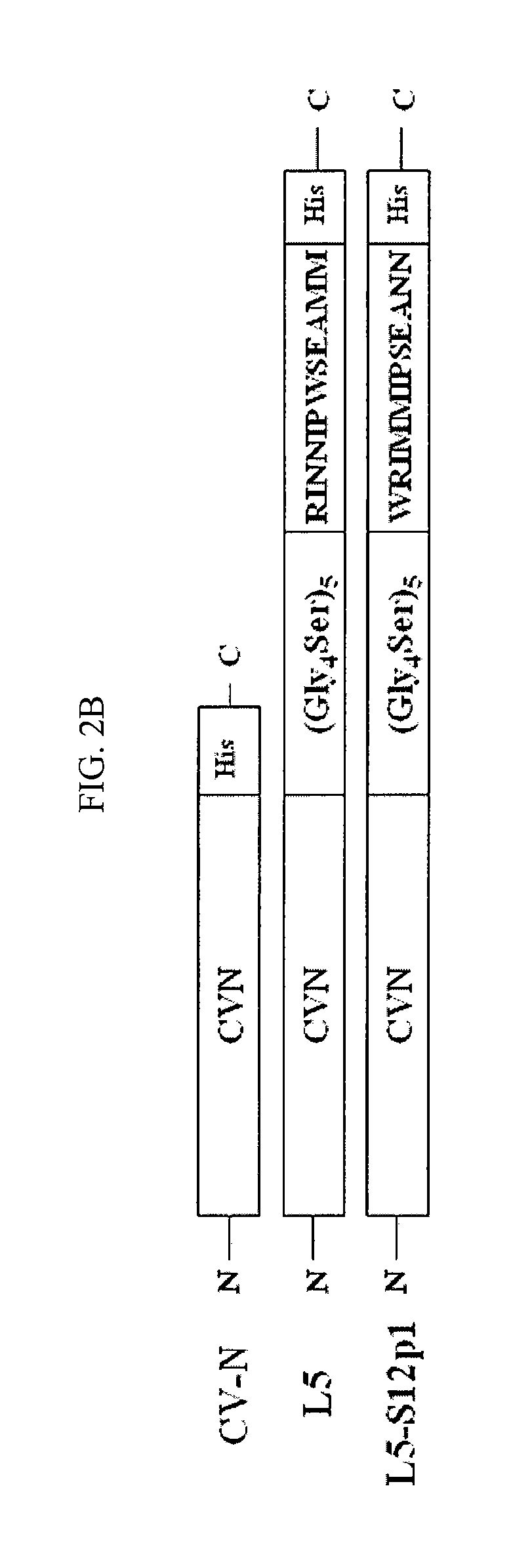CVN-12p1: a recombinant allosteric lectin antagonist of HIV-1 envelope gp120 interactions
a lectin antagonist and allosteric lectin technology, applied in the field of retrovirus inhibitors, can solve the problems of the amount of cvn production required and the potential limitations of the virus, and achieve the effects of preventing sexual transmission, preventing growth or replication, and immediate and more effective respons
- Summary
- Abstract
- Description
- Claims
- Application Information
AI Technical Summary
Benefits of technology
Problems solved by technology
Method used
Image
Examples
example 1
Materials and Methods
Reagents and Proteins
[0111]The following reagents were obtained from the NIH AIDS Reference and Reagent Program, Division of AIDS, NIAID: HIV-1BaL gp120, HIV-1SF162 gp120, HIV-1CM235 gp120 from Protein Sciences, Corporation, HIV-1 gp120 Monoclonal Antibody (2G12) from Dr. Hermann Katinger; HIV-1 gp120 Monoclonal Antibody (F105) from Dr. Marshall Posner and Dr. Lisa Cavacini. HIV-193MW959 gp120, HIV-192UG21-9 gp120, HIV-192US715 gp120 and SIVPBj2-8 HIV-1 gp120 and AN1 were provided by colleagues. Monoclonal Antibody 17b was obtained from Strategic Biosolutions. CVN plasmid and anti-CVN polyclonal antibodies were a gift from Biosyn Inc.
example 2
Expression and Purification of CVN and CVN-12p1
[0112]BL21 Codon Plus (DE3) RIL competent cells (Stratagene) containing either CVN or the chimera were grown in Superbroth supplemented with 1 mM MgSO4, 0.5% glucose and 25 μg / ml kanamycin in a 37° C. shaking incubator until the absorbance at 600 nm read 1.2. Protein expression was induced with 1 mM IPTG for two hours at 37° C. The cells were then centrifuged at 3,000 rpm for 15 minutes and the resulting pellet was resuspended in 100 mM Tris, 1 mM EDTA and 20% sucrose. This was mixed for one hour at 4° C. followed by resuspension in cold water which was stirred overnight at 4° C. The lysates were centrifuged at 10,000 rpm for thirty minutes and the supernatant sterile filtered and dialyzed into 50 mM NaH2PO4, 300 mM NaCl and 10 mM imidazole pH 8.0. The extracts were then adsorbed onto NiNTA agarose beads (Qiagen) and washed with three column volumes of 50 mM NaH2PO4, 300 mM NaCl and 20 mM imidazole pH 8.0. The protein was eluted with 50...
example 3
YU2 gp120 and sCD4 Production
[0114]Recombinant YU2-gp120 from HIV-1 was produced in Schneider 2 (S2) Drosophila cells under the control of the metallothionein promoter as previously described41. In brief, the cells were grown in Insect-Xpress medium (Cambrex) supplemented with 10 mM L-glutamine and 1% antibiotic / antimycotic in shaker flasks at 28° C. Protein expression was induced with 750 μM copper sulfate until the viability as determined by trypan blue was 70%. The supernatant was fractionated on an F105 mAb affinity column, washed extensively and eluted with 100 mM glycine-HCl, pH 2.1. The samples were neutralized with 1M Tris, pH 8.0 buffer immediately after elution. Fractions containing gp120 were pooled and dialyzed overnight at 4° C. against Dulbecco's phosphate buffered saline.
[0115]CHO-ST4.2 cells, which secrete the full extracellular domain of CD4, were obtained from Dr. Dan Littman through the AIDS Research and Reference program Division of AIDS, NIAID. They were grown i...
PUM
| Property | Measurement | Unit |
|---|---|---|
| flow rate | aaaaa | aaaaa |
| temperature | aaaaa | aaaaa |
| equilibrium dissociation constant KD | aaaaa | aaaaa |
Abstract
Description
Claims
Application Information
 Login to View More
Login to View More - R&D
- Intellectual Property
- Life Sciences
- Materials
- Tech Scout
- Unparalleled Data Quality
- Higher Quality Content
- 60% Fewer Hallucinations
Browse by: Latest US Patents, China's latest patents, Technical Efficacy Thesaurus, Application Domain, Technology Topic, Popular Technical Reports.
© 2025 PatSnap. All rights reserved.Legal|Privacy policy|Modern Slavery Act Transparency Statement|Sitemap|About US| Contact US: help@patsnap.com



